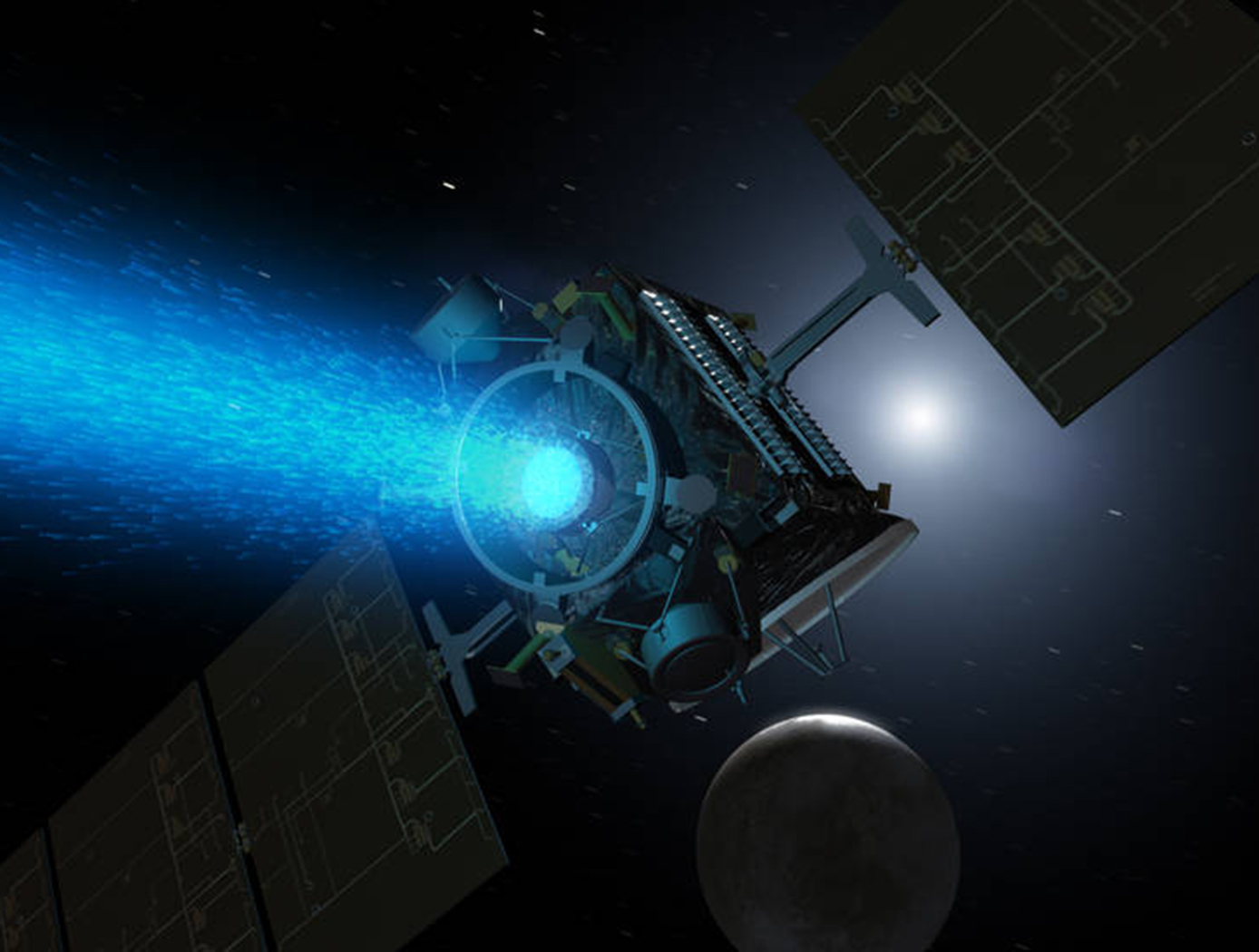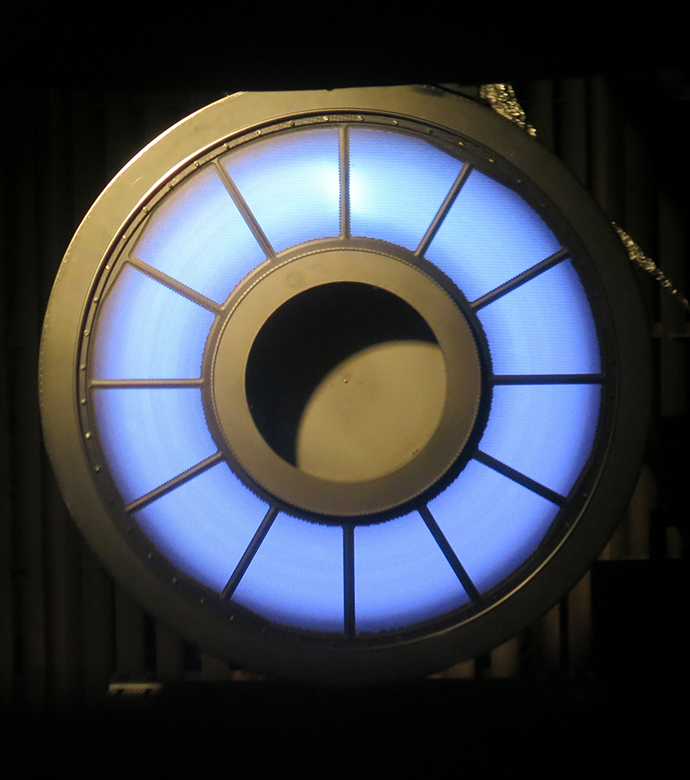Annular Ion Engine
propulsion
Annular Ion Engine (LEW-TOPS-74)
Enables high thrust density for electric propulsion systems
Overview
Innovators at NASA's Glenn Research Center have developed a breakthrough in ion thruster technology. The Annular Ion Engine (AIE) features an annular discharge chamber with a set of annular ion optics, potentially configured with a centrally mounted neutralizer cathode assembly. Compared to current state-of-the-art, cylindrically shaped ion thrusters, the AIE includes two primary advantages: 1) it enables scaling of ion thruster technology to high power at specific impulse (Isp) desirable for near-term missions, and 2) it provides a substantial increase in both thrust density and thrust-to-power (F/P) ratio. With its additional increase in lifetime service and improvements in packaging, Glenn's AIE represents the next generation of electric propulsion systems that require higher power, F/P, and efficiency, such as Solar Electric Propulsion (SEP) vehicles that may transport humans to the moon and Mars.
The Technology
The advantages displayed by Glenn's AIE stem from a number of novel design concepts, centered on an annular discharge chamber with a set of annular ion optics. The annular discharge chamber increases the effective anode surface area for electron collection as compared to a conventional cylindrically shaped ion thruster of equivalent beam area. With this increased surface area, the AIE can operate at higher discharge currents and therefore high beam currents, thereby yielding a significantly increased (3x) thrust density. An annular-geometry flat electrode can be added to enable higher-perveance designs with even higher thrust densities, with improved F/P and efficiencies compared to more conventional, spherically domed electrodes. In addition, Glenn's design allows the neutralizer cathode assembly (NCA) to be placed in a central position within the annulus, which not only eliminates the cantilevered-outboard NCA used in most conventional ion thrusters but also enables a shared gimbal platform. These benefits make manufacturing the AIE simpler as well as allowing more compact engine designs. All of these advantages add up to an electric propulsion machine that yields superior performance over the entire Isp range, making the AIE attractive for next-generation SEP vehicles. Glenn's technological advance enables spacecraft to travel farther, faster, and more cheaply than with any other propulsion technology - with clear benefits for NASA and commercial space applications.


Benefits
- High power: Relatively small electron spans deliver as much as 10x the power capability
- High performance: Up to 3x increase in thrust density over conventional cylindrically shaped ion thruster
- Efficient: Realizes frugal propellant usage and very high exhaust velocity
- Durable: Comparatively simple design results in 10x increase in lifetime
- Scalable: Electric propulsion systems from 10kW to 300kW and higher
Applications
- Aerospace
- Commercial space
- Military
- Propulsion (e.g., SEP vehicles, station keeping, deep space probes)
- Satellites


